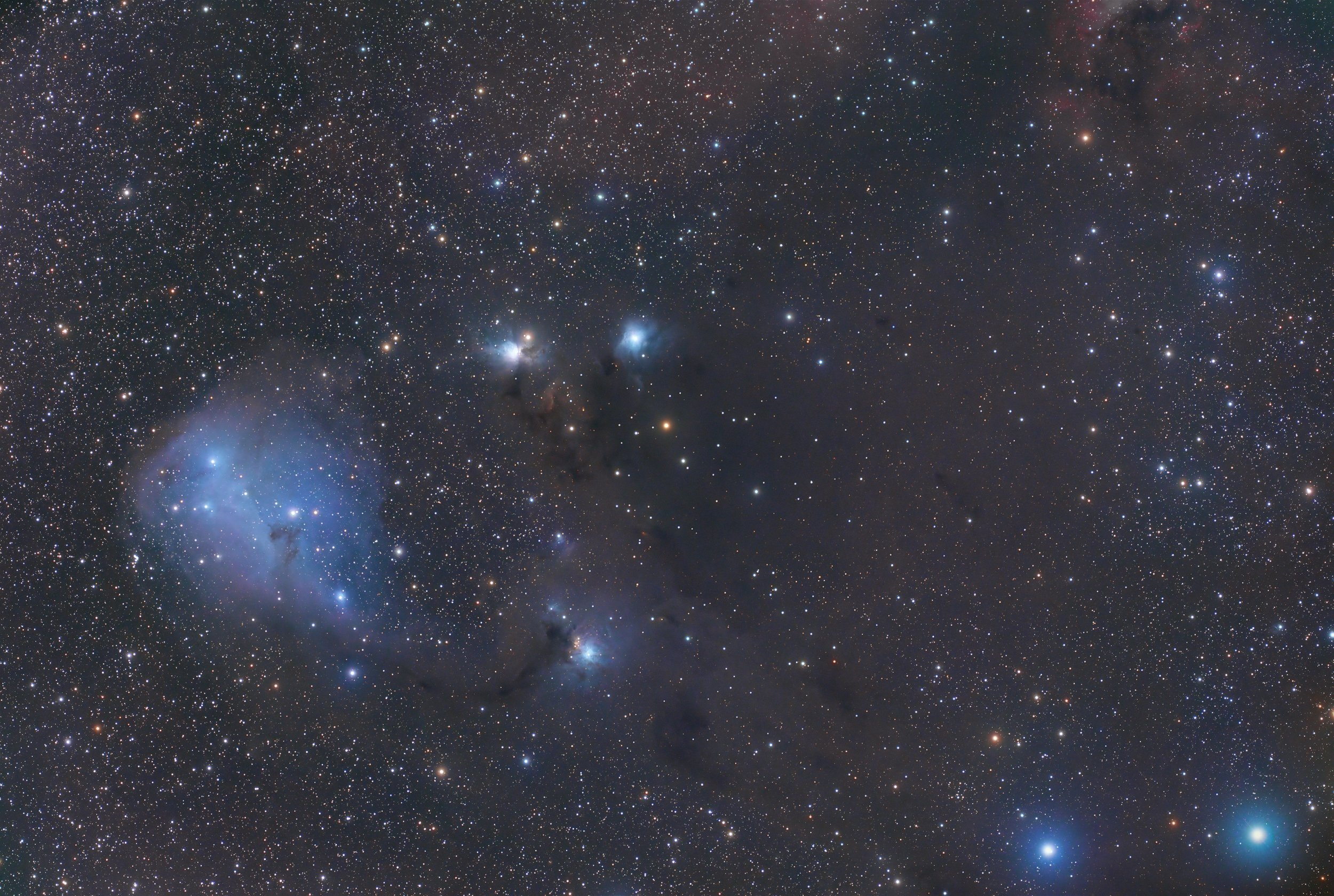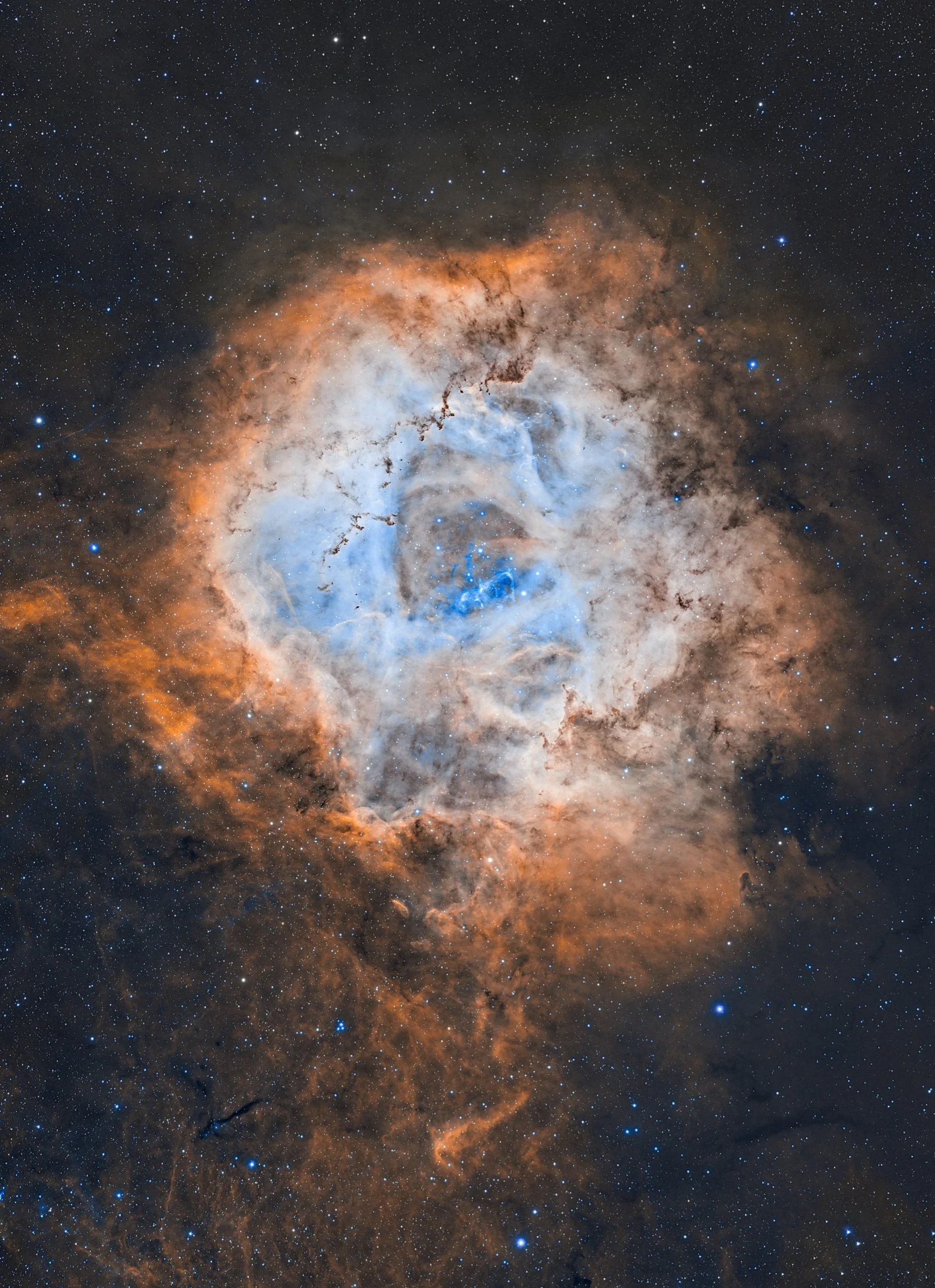
AAPOD2 Image Archives
The Rosette Nebula in SHO – A Stellar Bloom
The Rosette Nebula (NGC 2237) is a vast emission nebula located in the constellation Monoceros, approximately 5,200 light-years from Earth. This stunning region of ionized hydrogen glows due to intense ultraviolet radiation from the young, hot stars of its embedded open cluster, NGC 2244. The radiation and stellar winds from these massive stars have sculpted intricate structures within the nebula, creating a cosmic “flower” spanning over 130 light-years.
Captured in the SHO Hubble Palette over 37 hours of integration time, this image reveals the nebula’s complex interplay of gases. The sulfur (SII) emissions appear in red, hydrogen-alpha (Ha) in green, and oxygen (OIII) in blue, highlighting delicate filaments and shock fronts. The deep exposure brings out the faintest wisps of nebulosity, while the central cavity—carved by stellar feedback—stands as a testament to the dynamic life cycle of massive stars.
The Rosette Nebula in Bicolor
Image Description and Details : The Rosette Nebula, photographed in bicolor. The HA was taken from the city (Las Vegas Bortle 9), the OIII was taken from the desert (Bortle 4). The total exposure time is 20 hours.
Copyright: Antoine & Dalia Grelin



